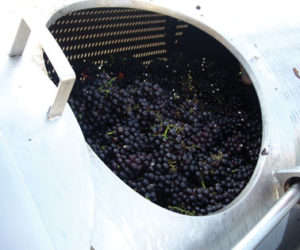 There is lots of information out there about how to run various juice and wine analytical procedures at home if you want to do that. If you do not want to run the tests but you are interested in the answers, you may live in an area that has a commercial or university laboratory that does testing on wine. Here is some advice on when, why, or even whether you might want to take advantage of such resources and have testing done. Before getting into specific tests, I want to expand a bit on using the results. As a long-time laboratory manager myself, a piece of advice I often gave clients was, “don’t run the test if you won’t use the answer.” Acquiring data that does not assist with decision making just confuses the issue and wastes your money. Make sure you are clear in advance that data you pay for will be (or at least may be) applied to real-world actions concerning your wine.
There is lots of information out there about how to run various juice and wine analytical procedures at home if you want to do that. If you do not want to run the tests but you are interested in the answers, you may live in an area that has a commercial or university laboratory that does testing on wine. Here is some advice on when, why, or even whether you might want to take advantage of such resources and have testing done. Before getting into specific tests, I want to expand a bit on using the results. As a long-time laboratory manager myself, a piece of advice I often gave clients was, “don’t run the test if you won’t use the answer.” Acquiring data that does not assist with decision making just confuses the issue and wastes your money. Make sure you are clear in advance that data you pay for will be (or at least may be) applied to real-world actions concerning your wine.
Finding a laboratory and communicating with the staff may present some challenges. University labs or those at wineries that are doing you a favor by running your tests may be on a slower cycle and not much under your control. Commercial wine labs will have prompt turnaround times for results, but are mostly geared for testing commercial wines and may not offer a lot of advice and support to the home winemaker. Before submitting any sample, contact the lab of your choice and find out their requirements. There may be minimum sample sizes, temperature control requirements (for juice samples), and restrictions on what containers to use. The lab may also provide specific labels to be attached to the sample. If the lab is not within driving distance, you will need to get their instructions on shipping samples too. Finally, of course, you need to discuss fees and methods of payment. Commercial labs bill wineries on net-30 accounts, but will probably want a credit card number from an individual.
Depending where you live, it may be easy or difficult to find a wine laboratory nearby. If there are wineries in your area, the winemakers there will be familiar with testing options in the region and can advise you. If that help is not available, a good old Google search can work wonders. Just search for “wine laboratory place” and something will probably show up. For “place,” substitute the name of your city, appellation, county, or state. For instance, “wine laboratory Virginia” turns up three commercial testing labs on the first page of results and “wine laboratory Napa” turns up four. Once you have found a lab, you can move on to what you want to know and when you want to know it.
To help manage the data load in this article, I will consider a small list of tests that may be considered “routine” analyses (an expanded version of this column that includes some advanced “problem solving” tests is available online). Times to apply the tests, methods likely used, approximate costs, and guidelines on interpreting results follow the list.
Routine tests:
• Brix or glucose+fructose
• pH
• Titratable Acidity (TA)
• Free Sulfur Dioxide (FSO2)
• Total Sulfur Dioxide (TSO2)
• Ammonia Nitrogen (N)
• Primary Amino Nitrogen (NOPA)
• Alcohol (ABV)
• L-malic Acid
• Lactic Acid
Juice tests:
As soon as you press your white grapes or crush and destem your reds, collect your sample. The major tests of interest at this stage are Brix, pH, TA, N, and NOPA. All of these are related to grape maturity or suitability for fermenting into wine. Brix, pH, and TA would be considered a minimum set to start your fermentation, while N and NOPA provide useful information for managing it. Labs often combine some or all of these tests into a “panel” that offers a discount from individual test pricing. Look for something like “juice panel” or “fermentation suitability,” which will usually run around $50 to $75.
Brix — Defined as “percent sugar by weight,” this factor is the key determinant of grape maturity and of potential alcohol. Labs usually use an optical refractometer, either digital or analog, to measure Brix. A hydrometer can be used also. The test is inexpensive at about $10 to $15 or you can do it yourself at home. As part of a panel, it is probably worth including so that all of your results come from a single source. For interpretation, you look at the desired sugar level for your grapes. For white wines, the common range is 21 to 23 °Brix and for reds, about 23 to 25 °Brix. If your level is significantly lower, consider adding sugar. If much higher, you may want to add water.
pH — This number is an expression of the hydrogen ion activity or, roughly, the free available acidity in a sample. It is measured with a pH meter and is reported with no unit designation or simply in “pH units.” Inexpensive at $10 to $15, it also can be measured at home with your own calibrated pH meter. Normal levels in red wine are from 3.3 to 3.6, for white wine, about 3.2 to 3.5. While lower numbers do not indicate a problem, some yeasts or malolactic bacteria may not thrive at very low pH values. Higher pH numbers than these ranges indicate possible instability and a need to closely monitor sulfur dioxide levels. Tartaric acid can be added to lower the pH, but not to an extent that significantly distorts the next measure, TA.
TA — The titratable acidity is the sum of all titratable acids in the juice expressed as tartaric acid. The test may be done by conventional or automated titration, or using another instrument called a segmented flow analyzer. Another inexpensive test, it costs around $10 to $15 or may be done at home with a kit or with conventional titration apparatus. For the results, the lab may report in either grams per liter (g/L) or grams per 100 mL (g/100 mL), which is roughly equivalent to “percent.” For a given sample, the g/L result is exactly 10 times the g/100 mL result. Normal levels for red wine are about 5 to 7 g/L and for whites about 6 to 8 g/L. If your result is significantly lower, add tartaric acid. If higher, you may need to deacidify.
N — Although not representing all of the nitrogen in juice, ammonia nitrogen is the most readily available to yeast. Ammonia, NH3, is present in grape samples primarily as ammonium ion, NH4+. It is reported as nitrogen for convenience in calculating the total amount of nitrogen available for yeast growth. That value, called Yeast Assimilable Nitrogen (YAN) or Yeast Assimilable Nitrogen Compounds (YANC), is critical in determining nutritional needs during fermentation. YAN is the sum of ammonia nitrogen and primary amino nitrogen, the next test reviewed below. Analyzed alone, ammonia costs $15 to $20 and is analyzed by ion selective electrode or by specific enzymatic methods. The number is not meaningful unless the primary amino nitrogen (NOPA) is also known.
NOPA — This acronym refers to the most common method for analyzing primary amino nitrogen; N by using the OPA reagent. Also called assimilable amino nitrogen, it is tested on a spectrophotometer by determining the optical absorbance of a reacted sample in comparison with a standard curve. The test costs about the same as ammonia and is usually included in a combined YAN result or as part of a juice panel. Interpreting the sum of ammonia and primary amino nitrogen requires that you look at your choice of yeast strain as well. Add together your ammonia nitrogen and your primary amino nitrogen (NOPA) to determine YAN. YAN in grapes may be as low as 50 mg/L (ppm) to as high as over 225 mg/L. A moderate result of perhaps 125 to 225 mg/L will support healthy growth of yeast strains rated “low” or “medium” in nutritional needs; consult your yeast supplier for such requirements. Yeasts that are “high” or “very high” in nutritional need will commonly need supplemental nitrogen. Nitrogen can be added in the form of a balanced yeast nutrient blend like Fermaid K or Superfood. Most fermentations benefit from a modest addition of such nutrient blends. If you need more nitrogen than the maximum dose of those products allow, you will need to use diammonium phosphate (DAP) for further supplementation. DAP is a simple ammonium salt that raises the ammonium level in the juice.
L-malic acid — L-malic acid is one final test that may be of interest in your juice. It represents a portion of the TA as determined by the TA test. It represents the entire amount of malic acid available for later conversion to lactic acid by malolactic fermentation (MLF). Because lactic acid is about half the acidity of the starting malic acid, knowing this number may help you decide to inoculate for MLF or not. Malic acid is another inexpensive test at about $12. It is determined by enzymatic methods, high-performance liquid chromatography (HPLC), or (for monitoring the progress of MLF) paper chromatography.
Levels in juice are commonly found in the range of 1,000 mg/L (1 g/L) to about 2,500 ppm (2.5 g/L). When expressed as tartaric acid as in a TA test, that means that complete conversion of malic acid to lactic acid will lower the TA in a proportional amount. As tartaric, lactic acid accounts for only half
as much as the tartaric acid equivalent of the malic acid it replaces. For the range cited, the reduction in TA would be about 0.5 g/L for the lower level and 1.25 g/L at the upper level. You can use that information in deciding to inoculate for malolactic fermentation or not.
Primary fermentation tests:
Brix — During primary fermentation you should be monitoring the Brix on a regular basis. Since alcohol is lighter than water, hydrometer Brix numbers will go into negative readings as sugar drops near zero. To confirm completion of alcoholic (primary) fermentation, you may wish to have a laboratory perform the related analysis: Glucose + Fructose.
Glucose + Fructose — These are the primary sugars of juice and grapes. As the sugar level drops and the alcohol level rises, the meaningfulness of home hydrometer testing may become muddled. A commercial laboratory can do an enzymatic analysis on your wine to tell you exactly how much sugar is left. The test will cost around $12 to $15 and you can expect results (for dry wine) of about 0.4 g/100 mL (4 g/L) or less. At about that threshold, wine is considered stable against spontaneous refermentation after bottling. If your level is significantly higher, you may be interested in the glucose and fructose numbers separately. Most wine yeasts are glucophilic, preferentially processing glucose before fructose. If a significant remainder of sugar is fructose, you may have great difficulty restarting and finishing the fermentation.
L-malic acid — If you did not run this test on the juice, you may want to run it now as the starting point on a planned malolactic fermentation.
Secondary fermentation tests:
L-malic acid and Lactic acid — The same methods described earlier may be used to monitor progress of malolactic fermentation. A commonly used threshold of “complete” MLF is when the malic acid level drops below 30 ppm or 3 mg/100 mL. The lower it gets the more stable the wine is and higher levels indicate that MLF is either proceeding or may restart.
Aging tests:
Once primary and secondary fermentation are complete, your main concern will be with stability. By far the most important parameter in that regard is the free sulfur dioxide level (FSO2), but you may also wish to determine to what extent pH and TA have changed from your original juice values.
FSO2 — This test, free sulfur dioxide, will cost about $15 and is run by aeration/oxidation or segmented flow analysis. (You may also see it offered by the Ripper method at a lower price, but that method is marred by interference from tannins, especially in red wines.) For stability, the required level of
FSO2 is pH dependent. It ranges from about 15 to 50 ppm for red wines and 20 to 80 ppm for whites at normal wine pH levels. High pH requires higher FSO2, possibly to the point of introducing an objectionable smell for sensitive individuals.
If at all possible, the level should be kept below 50 ppm. Monitor at least every four to six weeks throughout the aging period and at bottling and adjust accordingly (refer to the Sulfite Calculator at www.winemakermag.com/sulfitecalculator to determine your sulfite additions).
TSO2 — The total sulfur dioxide level is worth determining at least once during aging, but need not be run with every FSO2. In contrast with the 50 ppm or less desirable for FSO2, the total in commercial wine is allowed to rise to 300 ppm to 350 ppm. Those levels are so much higher than typical “free” results that a single verification during aging is probably enough to assure that you are not approaching the legal limit. Analysis is by the same methods: Aeration/oxidation or segmented flow. The price is about $5 higher than the “free” method due to additional sample manipulation that is required.
pH — Analyzed just as for juice, the pH will likely have risen a bit from initial juice values. You need to know it to interpret your FSO2 level.
TA — This number will usually drop from the original juice level, although in some cases it may rise due to production of succinic acid by yeast. Analyzed as described for juice, you need the answer if you plan on an acid adjustment before bottling.
Bottling:
When you bottle your wine, you may wish to assess the same parameters usually reviewed by commercial wineries. These include tests already discussed: FSO2, TSO2, Glucose + Fructose, pH, and TA. Add to these one more indicator of long-term stability: Ethanol or alcohol by volume (ABV). For ethanol, analysis is by densitometry, gas chromatography, or ebulliometer. Ethanol is the primary alcohol of wine and is usually between 12 and 15% by volume for dry wine and higher in fortified or late harvest wines. The test will cost about $25 to $30.
There you have some major tests at principal stages of wine development. If you are feeling deprived because there are no wine laboratories in your region, I have one final suggestion. Almost every region has geotechnical laborato
ries that test soil, water, and possibly waste samples. Many of the laboratory methods and instruments are adaptable to wine analysis. If you cannot find a wine lab near you, get together with your winemaking buddies or home winemaking club to see if you can make one happen. Visit the best geotechnical lab in your area and talk to the marketing and technical staff about adding wine testing. Every good business is looking for ways to expand!






